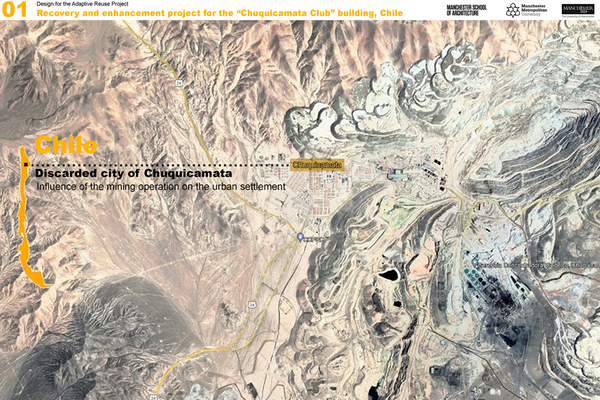Recovery and enhancement project for the “Chuquicamata Club” building, Chile
I am a Chilean Architect, with interest in industrial settlements, buildings and spaces built for large-scale mining operations. Due to changes in industrial operation and extractive logistics, some of these settlements are currently in the process of abandonment and deterioration, losing their history and sustainability, and affecting the social conditions of their community.
The research and design are focused on the mining camp of Chuquicamata, Chile, analyzing the typology of the company town and the process of closure and discarded of the housing camp, investigating urban development, social and community conditions. The project intervenes in the Chuquicamata Club building, using the natural slope of the place and generating new exhibition spaces that enhance the history and condition of the existing building, linking it with the public space and community activities. The generation of the space narrates the industrial mining activity, referring to copper, exploitation tunnels, and excavations, using the construction elements of the building, such as pillars, retaining walls, and foundations, linking it with the existing public space. These spaces are associated with routes that generate a journey through Chuquicamata, highlighting the buildings and history of the place, and proposing their rescue and permanence through an urban recovery program that inserts social, educational, economic, and commercial activities that give sustainability to the place.
I trust that the application of adaptation and reuse strategies generates preservation and sustainability actions that validate history, and above all provide new development opportunities for buildings, situations, and the place. Through this master's degree, I understand and bet that the adaptive reuse project is also approached from an urban scale, allowing continuity to the place through the practices and public space of its community, which allows it to be linked to the building up to the scale of detail and materiality.


